Supermicro ARS-111GL-NHR Power Consumption
In terms of power consumption, the GH200 system idled at around 680W. We were able to hit peaks in the 1.4-1.6kW range depending on what we were doing. Of course, with modern big systems, there is usually a gap between maximum power and typical power that is becoming more noticeable. Even in the big NVIDIA HGX platforms we have reviewed, you need to know the maximum power for peaks your racks will hit, but the actual average power is usually lower.
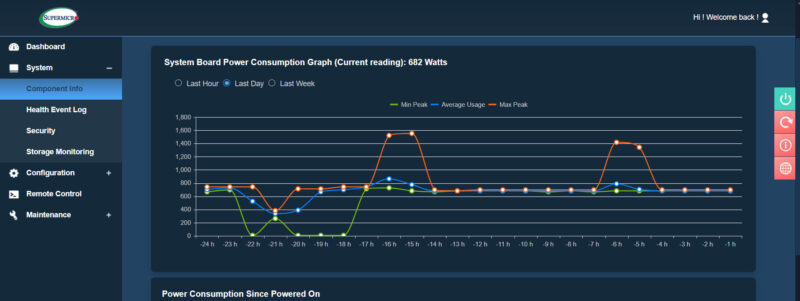
One of the major items impacting this is the NVIDIA GH200. This is set to only 900W cTDP, so there is some room to go up from there as GH200’s can be rated for up to 1000W cTDP.
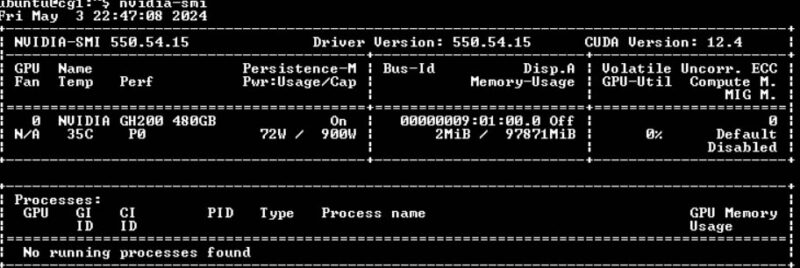
Another thing to remember is that, although it may not seem like it, the other components use significant power. The NVIDIA BlueField-3 DPU usually can pull up to 66W from the PCIe x16 slot, then up to 84W from the PCIe power connector for up to 150W. It is far from a low-power NIC but it is running another 16 Arm cores. The ConnectX-7 Infiniband NIC is often rated at 19-20W typical with DACs and more with optics. We also had local SSDs for data and boot, which adds a few more watts.
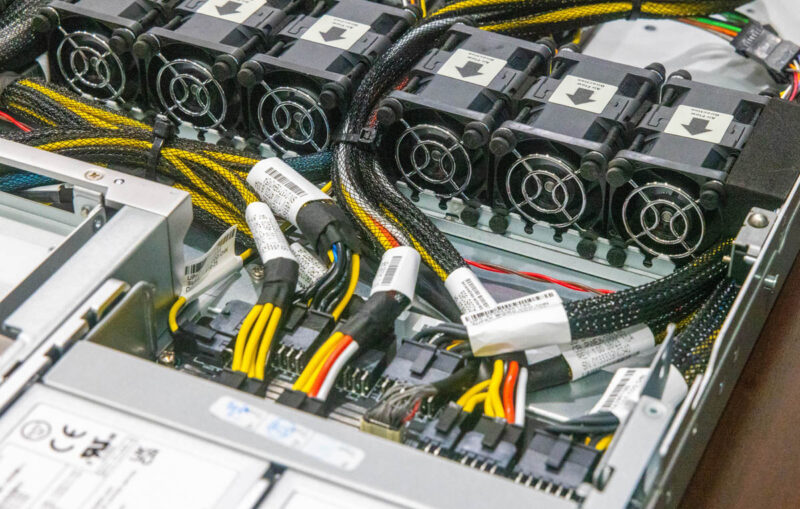
Figure 12-20% of the maximum power consumption peak is being used for fans, between the power supplies and chassis fans. That, combined with the ability to potentially push the GH200 harder is a big reason many will look at the liquid-cooled version of these. Supermicro sells those as well, but we are looking at the air-cooled version.
STH Server Spider: Supermicro ARS-111GL-NHR
In the second half of 2018, we introduced the STH Server Spider as a quick reference to where a server system’s aptitude lies. Our goal is to start giving a quick visual depiction of the types of parameters that a server is targeted at.
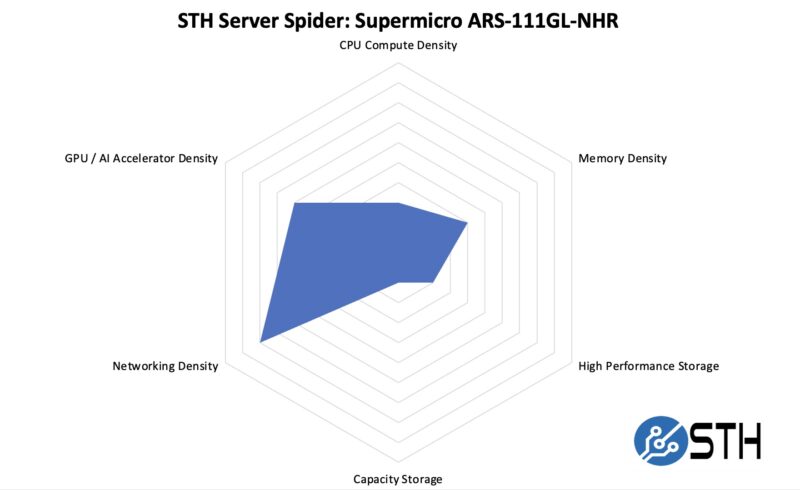
Overall, this system is interesting. It is not the densest CPU or GPU system by any means. Modern servers can already fit 512 CPU cores or more per U, and Supermicro can easily put two full-power H200 GPUs per U in its popular liquid-cooled racks. On the other hand, it is an easier-to-deploy air cooled GH200 system that many will want in preparation for the GB200 in 2025. It also uses a lot less power than upcoming systems making it a bit more practical for those who do not have high power density racks.
Power has become such a big deal that we did an entire video on the subject earlier this year.
Final Words
In some ways, it is awesome to see how simple the Supermicro NVIDIA GH200 platform is. Grace Hopper connects the CPU, GPU, and memory all onto a single package. Cables span the chassis with PCIe Gen5 so that high-speed networking and local storage are connected. It is amazing to see how simple the GH200 design ends up being compared to typical Intel Xeon, AMD EPYC, and Ampere servers.

At the same time, running the NVIDIA GH200 at 900W meant that there was a giant heatsink in this system that spanned the entire width of the chassis and was absolutely huge. The benefit is that we get a relatively quick Arm Neoverse V2 CPU, 480GB of memory, and a Hopper GPU all cooled using one massive heatsink assembly.
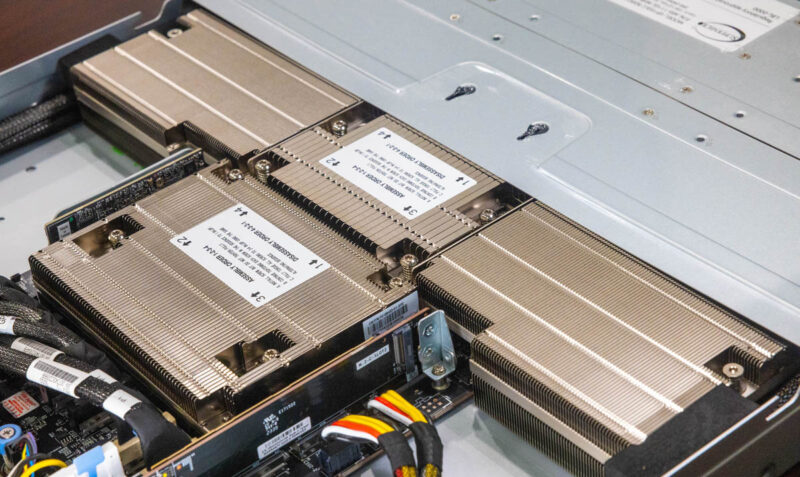
We hope folks enjoyed this look at Supermicro’s air-cooled GH200 server. This is a really neat machine and a gateway to future NVIDIA GB200 servers. It also shows us a lot of new NVIDIA technology that is perhaps not implemented, but that we can see artifacts of when looking through the server.

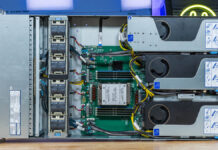
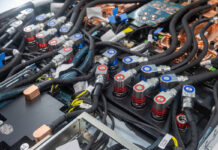
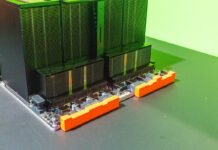
“You might notice these two pieces of metal” but you’ll have to click through to substack to discover what they are!
Maybe the clickbait shouldn’t come at the cost of making the article incomplete?
@A Concerned Listener – They are not being used in this system and it is an entirely different topic that was almost as big as this entire review.
I know folks may not love the fact that we have multiple publications now, but a lot of work is happening to decide what goes on the main YouTube channel versus short-form and STH versus Substack. We will not always get it right, but that is a very different topic since it is not in this server.
I can’t make sense of the spider graph for this system, how does this rank higher for networking density than GPU Density? Also adding to the above regarding the clickbait, that’s not why we come to STH
I’m subbed to the Substack via my company. It’s like another STH less about the hardware and more about the business of what’s going on through the lens of hardware. I’m enjoying it so far. I’ve been reading STH for more than a decade so I’m happy to spend some of my subscription allocation on supporting them. I’d rather do that and get exclusive content then see STH turn into Tomshardware with spammy auto-play video ads.
I’ll just tell you, the paywalled article that links to is worth the monthly sub alone to me. It’s a great PK article that I didn’t know about.
I don’t understand why people are complaining. They’re promoting another pub they have and this is longer than their average server review so it’s not like they took half of a review away.
I’m getting approval to sub at work.
Accolades belong to the STH team for this review. With this and last week’s GH200 I’m learning too much here so thanks